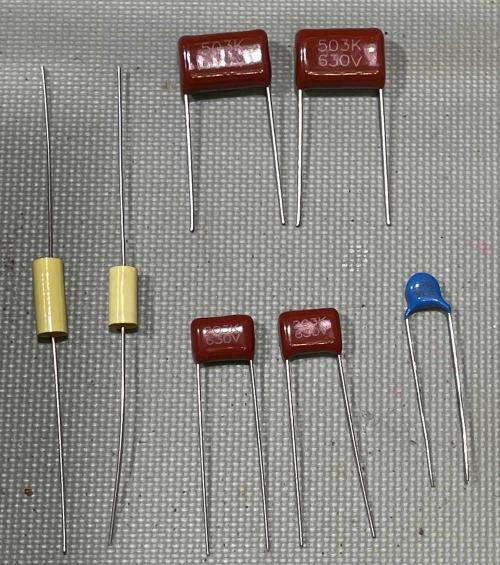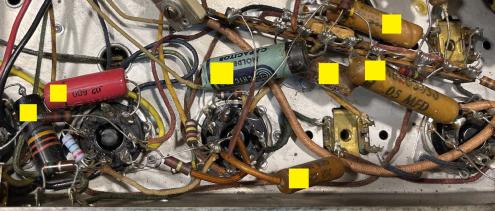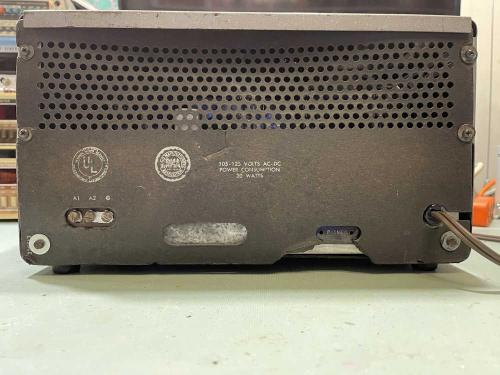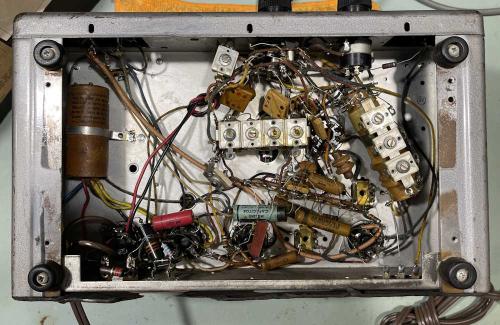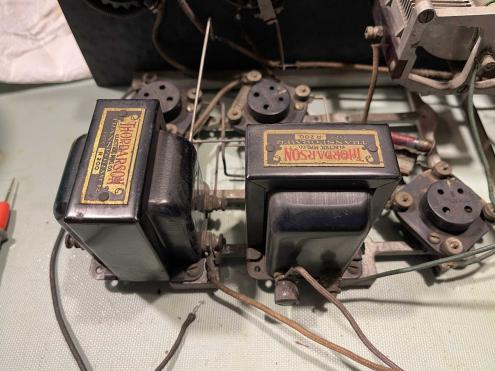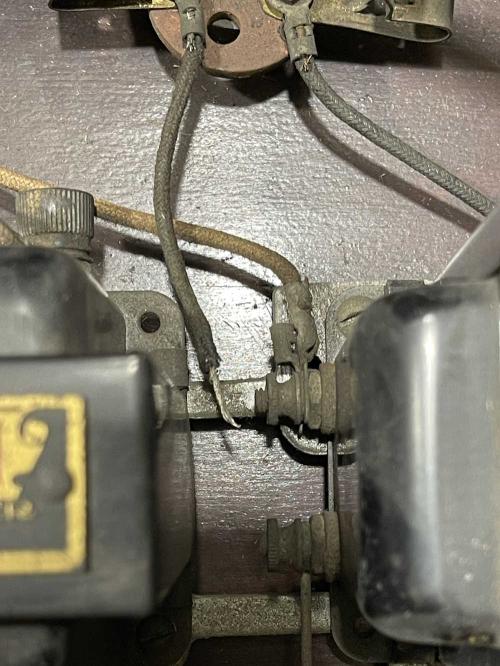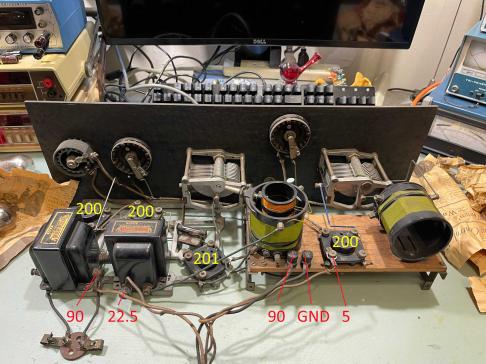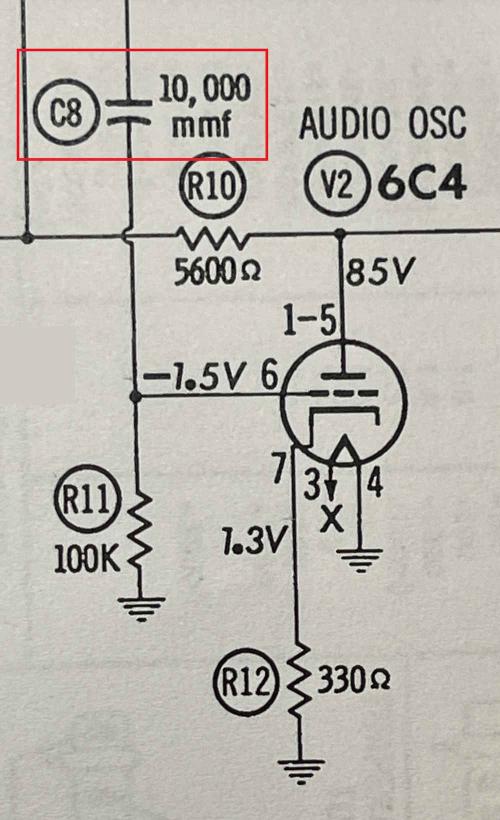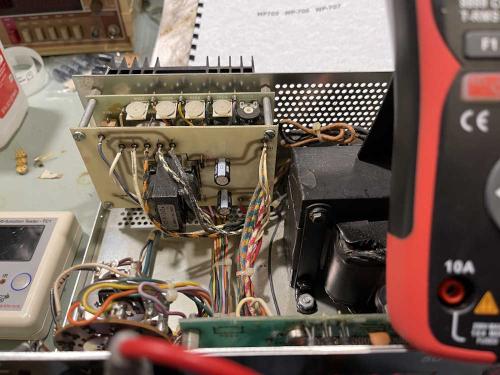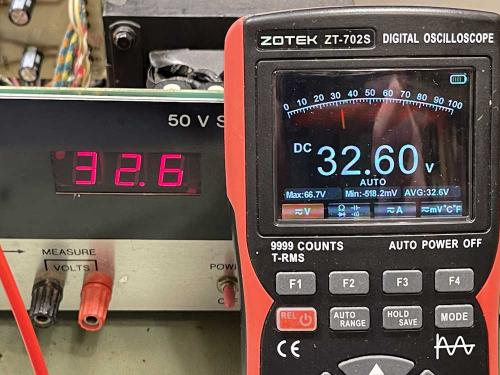- 2025
- Dec
- 9
Another S-38C on my bench, part 3: We have parts!
In the last installment, we talked about getting parts for the Hallicrafters S-38C. Justradios.com comes through again with values marked per the schematic.
I have exact values as per the schematic, not that it really matters too much. But, if you can get them, why not?
2 x 0.05μF
2 x 0.02μF
1 x 0.01μF
1 x 0.002μF
and
1 x 0.022 for the across-the-line capactitor.
I’ll probably get to this in a couple of weeks, as there’s some holiday prep that needs to be accomplished this weekend.
- 2025
- Dec
- 3
Tickets for the 2026 Dayton Hamvention are available.
Mail-order tickets for the 2026 Dayton Hamvention are now available. It’s the same price as last year - $26 for all three days, and this is a discount over window price. They’re generally available until the end of April. After that, they start getting held will-call for pickup day of show.
This is the premier event of it’s type, and for the longest time when I only had one slot available for shows it’s the one I chose to go to.
Dayton Hamvention
Greene County Fair and Expo Center - The Whole Thing
210 Fairground Road
Xenia, OH 45385
May 18 19 20
Hours vary by day, opens at 9AM
https://hamvention.org
See you there!
- 2025
- Nov
- 29
Another S-38C on my bench, part 2: Parts
I’m only going to replace the leaky capacitors on this unit, so I’ve identified the following parts:
All of the parts marked with a yellow rectangle need to go. These are probably leaky enough that they could potentially cause issues with the device, and that black bumblebee part is a known problematic unit.
I’m going to order these pars if I don’t have them in stock, all @ 630V except the across-the-line ‘bee. Those have their own ratings, and I have plenty in stock.
2 x 0.05μF
2 x 0.02μF
1 x 0.01μF
1 x 0.002μF
I’ll probably just order my standard yellow films unless I can get a good deal on another type.
Edit: I got a good deal on some other types from justradios.com.
Stay tuned, there will probably be another post or two before we wrap up 2025!
- 2025
- Nov
- 26
Another S-38C on my bench, part 1: Examination and Diagnosis.
Last year at Dayton, I had purchased an S-38C because I wanted another example, having had one when I was younger. Unfortunately, while I found one, it seems to have silver-mica disease. Really, really bad. So the hunt was on for another one.
I found this one at Findlay 2025:
It’s in decent enough shape. Back and bottom covers are present, even though the paper is deteriorating.
Inside, it shows a little work. Some new resistors, a filter that’s been resoldered, and a new power cord.
I’m going to replace the 6 tubular capacitors in this one so it’s somewhat safe to use. Of biggest concern, of course, is the bumblebomb present across the line. That absolutely must go.
Other than that, the filter is in good shape, so it stays for now.
Stay tuned for the next part of this series where we determine what parts we actually need!
Next part of this series: Coming soon.
- 2025
- Nov
- 24
Some last thoughts on Nostr.
I’ve been posting blog links to a federated social network called Nostr. This was mostly to drive traffic here, but I’d reply to anything that was sent to me that was not obvious spam. I’ve written about that in a couple of past posts:
Federated but disassociated: https://wereboar.com … etworking-via-nostr/
Some thoughts a few months later: https://wereboar.com … -after-a-few-months/
One of the reasons I chose the site I did was because it supported a feature of Nostr called “communities” - that’s exactly what it sounds like. A basic forum with a title and a common theme. I created /oldtech, a place for stuff like what I talk about here. While I never really got any other posts in the community, I did collect the usual spam.
Spam is a big problem on the Nostr network communities. There’s no good way to manage it, and the more popular you are the more you’ll get the standard Indian scams, crypto crap, and just general-purpose canned ham. You either approve it to show in the community, or you ignore it and it sits there in your inbox forever, waiting for you to approve it. In that regard, spam is very hard to control on Nostr, and it makes the communities messy.
Today I tried to make my usual Monday morning post and found that the site owner had removed communities in favor of a single feed of posts. The reason was that communities were “messy.” I fully understand this reasoning as there’s zero garbage control. Some of the communities I looked at had hundreds of pending spam messages in their box. (You can see pending messages, they just don’t show up in the regular feed.)
With that, my adventure with Nostr has come to and end, at least for now. I’ll check back in later in hopes it develops a little more, or perhaps I’ll find a new site that still has communities. Until then, you can find me here on wereboar, or on my mastodon feed.
Stay tuned for more hamfests, projects, and just plain junk!
- 2025
- Nov
- 24
An Unknown 2-dial TRF radio part 4: Full stop.
In the last part, we identified where the power connects. This part is about checking coils and transformers to identify any problem areas.
And…there’s a problem. The AF output transformer is open on the side that supplies the plate voltages. This is the leftmost transformer in the image.
While the Thordarson R-200 transformer was a common part for this type of radio, and they are out there in resale land…good examples can go for a bunchabuxx. Bad examples can still be somewhat expensive.
For now, this project stops. I’m not willing to invest a lot of money into what would ultimately be a gee-whiz device. I’ve whittled options down to these:
1: Find a transformer at a show. Perhaps Dayton or Cuyahoga Falls will have one at a reasonable price.
2: Try to open this one up without damaging the crimp ears that keep the mounting plate on the body.
3: Donate it to the Early Television Museum’s operating funds auction in the fall.
I’m thinking #3 is going to be the winner here, as I have plenty of other devices to work on. Stay tuned, this may yet show up in a future post.
Next part of this series: None at this time.
Previous part of this series: https://wereboar.com … s-inside-identified/
- 2025
- Nov
- 24
An Unknown 2-dial TRF radio part 3: Things inside identified.
When last we met, I had identified where the tubes went, so now it’s time to figure out where the power supplies need to connect. This looked very complex at first, but once I started reading about this type of radio, it became obvious how things were supposed to connect. But first, some other things to take care of.
There are a number of broken connections here. The original builder used some very precise bent wires in spots, and made “meh it has to connect” connections in others. Some of those have broken because they were just laid on their connection point without any kind of mechanical connection, and hit with a blob of solder. There’s even some solder blobs in the case indicating repairs were made in situ at times.
The first is the RF amp. This one was just laid on it’s terminal and soldered.
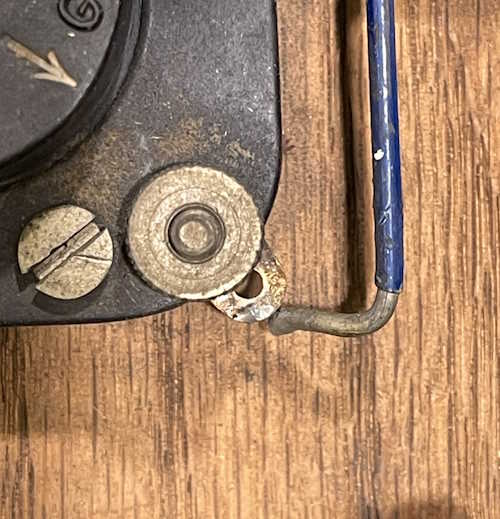
This one was resting against it’s connection point and poorly soldered.
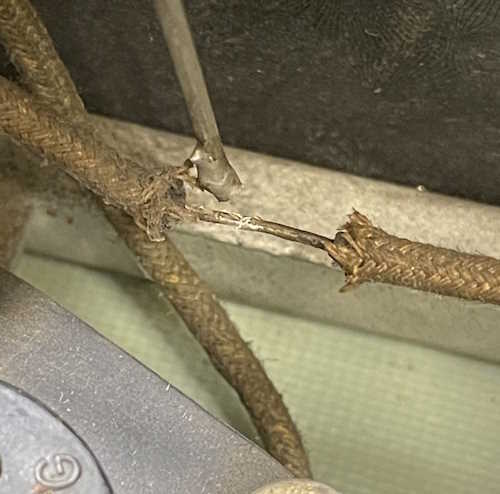
And the final one is just a wire that pulled out of a poorly crimped fork. This one is the 90V supply feed for the final AF amp, and uses the headphones as it’s bias.
With that out of the way, it’s time to move on to identifying the battery connections. I’ve already identified the tube layout, so it was mostly a matter of tracing back to see where the plate of each tube went. It threw me for a minute that the detector and final AF amps both connection via one of the interstage transformers, but that’s how these were built.
I found it interesting that the unit has two 90V connections, but then it occured to me that the builder was trying to keep RF out of the AF to prevent squealing. If you’ve ever had a radio with a bad AGC capacitor, you know what I mean…
Before applying power, there’s going to need to be some substantial cleanup. All connections are oxidized to the point of insulation - the power switch, for example, doesn’t even read resistance when closed. The tuning gangs are locked up tight, and the battery cables are no longer conductors.
The next step is to check coils and transformers to make sure all are giving a useful reading. Stay tuned!
Next part of this series: https://wereboar.com … io-part-4-full-stop/
Previous part of this series: https://wereboar.com … fying-things-inside/
- 2025
- Nov
- 17
The Scott Antique Market - November 29th and 30th, 2025.
While not exactly a hamfest, antique radio and electronics goes hand-in-hand with other antiques. This show is the season opener, and has a lot of vendors for that reason and because they want to move things for the holidays. It’s a good “get out of the house” after Thanksgiving, and be sure to get some chocolate-covered chips before you leave!
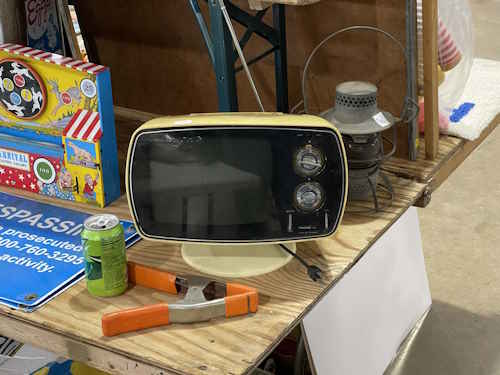
Scott Antique Market
Ohio Expo Center
717 East 17th Street
Columbus, Ohio 43211
Saturday November 29th: 9AM - 6PM
Sunday November 30th: 10AM - 4PM
Admission to the show is free, but the venue charges a per-car parking fee. See you there!
- 2025
- Nov
- 17
A PACO G-30 RF Signal Generator - Part 8: So we meet again
You probably remember this thing:
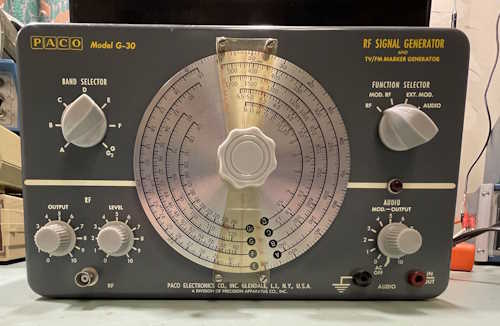
It wasn’t that long ago that this was wrapped up. (See the bottom of this post for that entry.)
However, a friend pointed out that the schematic didn’t match the unit. In particular, a capacitor in the audio oscillator wasn’t per the information:
C8 is a 103, aka 0.01μF capacitor, per the schematic. However, what’s in the unit:
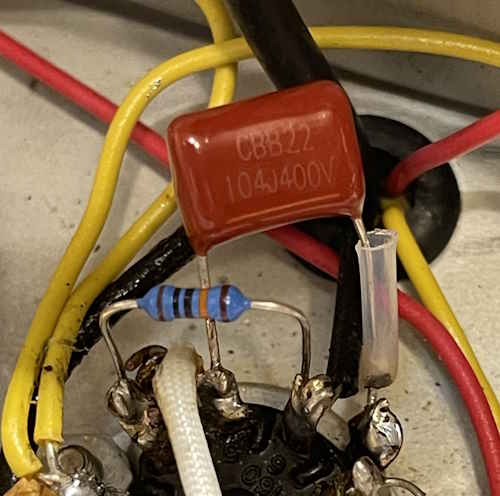
That’s very clearly a 104, aka 0.1μF part. Note that the resistor in the image is the one that was incorrect and replaced in a previous post.
No problem, I have plenty of 0.01μF left over from various rebuilds. One goes in easily:
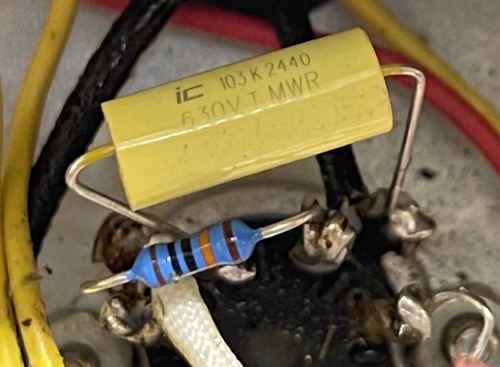
And,
It won’t oscillate. Okay.
The old part goes back in, and all is well. It’s oscillating again, right around the 499Hz it was the last time we looked at this unit.
So, what gives here? Well - I’ve found that many of these devices didn’t exactly follow the manufacturer’s information. Schematics were often printed before the unit was manufactured, and things changed. Problems were corrected, circuits were changed, new variants were released - all kinds of things that make what you have on the bench and what you see on paper deviate. You literally have to expect the unexpected here, or you’ll go crazy trying to figure out what happened.
I assume that the original owner probably put this part in, after discovering the same thing about the oscillator. Regardless, it’s back the way it was and bolted together again, waiting for it’s time to shine.
Previous part of this series: https://wereboar.com … rator-part-7-wrapup/
- 2025
- Nov
- 17
A Viz WP-705 Power Supply part 5: Wrapup and final thoughts.
This was an interesting device that required following a fault back to what was (most likely) it’s original source.
I’m going to assume that the regulator was probably destroyed by the noise spikes coming from the power supply transformer’s broken leads - either the spikes in the voltage caused it, or the excessively low voltage eventually destroyed the device. Who knows, but ultimately, the regulator was bad and the transformer board needed a complete re-solder.
In addition to the regulator board, there were a couple of 4.7μF capacitors on the display board - those were replaced, as were the 470μF capacitors on the display supply. There are larger capacitors on the actual regulator board, and those will need to be replaced as well - but they’re oddball sizes and will take some finding.
The last thing is to calibrate the display as best I can. While I have a manual, it’s of no use here because it’s for a different rev. I eventually discovered that the potentiometers on the display board calibrate the external measurement, and then the internal measurement. This was just turning them slightly and seeing what happened, and it was easy enough to dial in the correct values.
It was then buttoned up, ready for use. I’m not going to talk more about the calibration, since all of these seem different - but don’t be afraid to turn things just a tiny bit to see what happens, but always be aware of what you could be causing before doing so! Make sure you can fix it if you break it.
The two takeaway points on this were:
The manual you can purchase, while it claims to be the correct one (and mine is indeed for the WP-705) may not be the correct one, especially if the manufacturer assumed lines from another company.
The fault you see up front isn’t always the cause of the problem. In this case, tracing all the way back to the input revealed what probably caused the issue here.
With that, this unit goes on the shelf, waiting for it’s use. I suspect it’s going to see service with a coming project, something where some oddball voltages are needed. Stay tuned!
